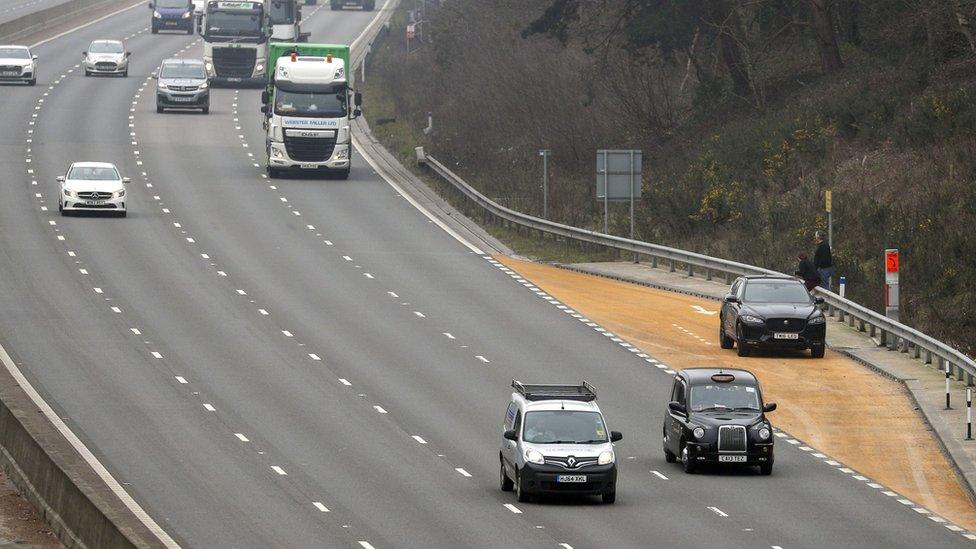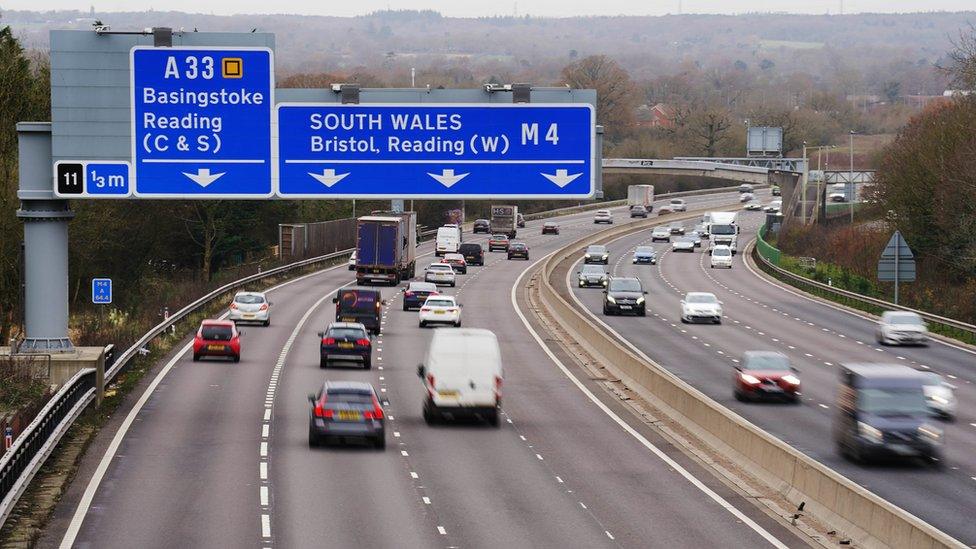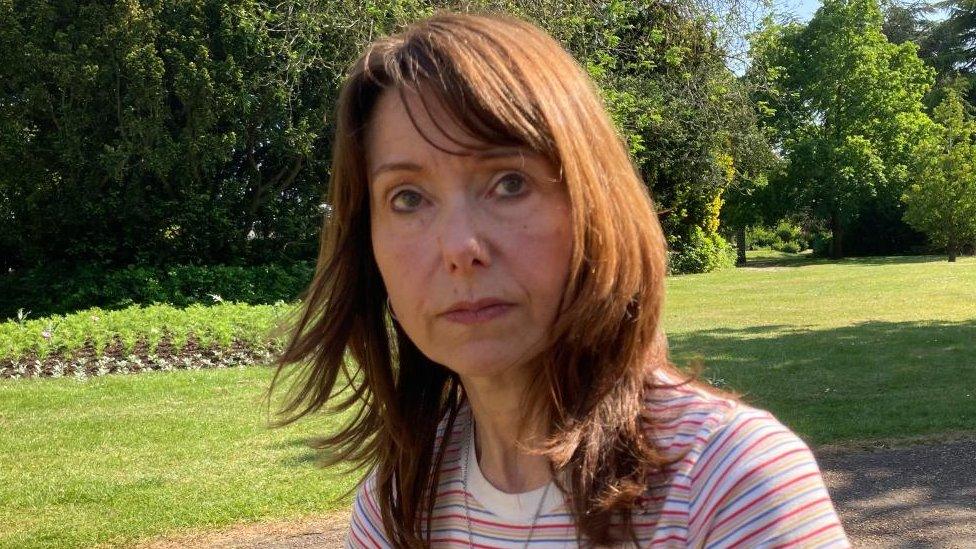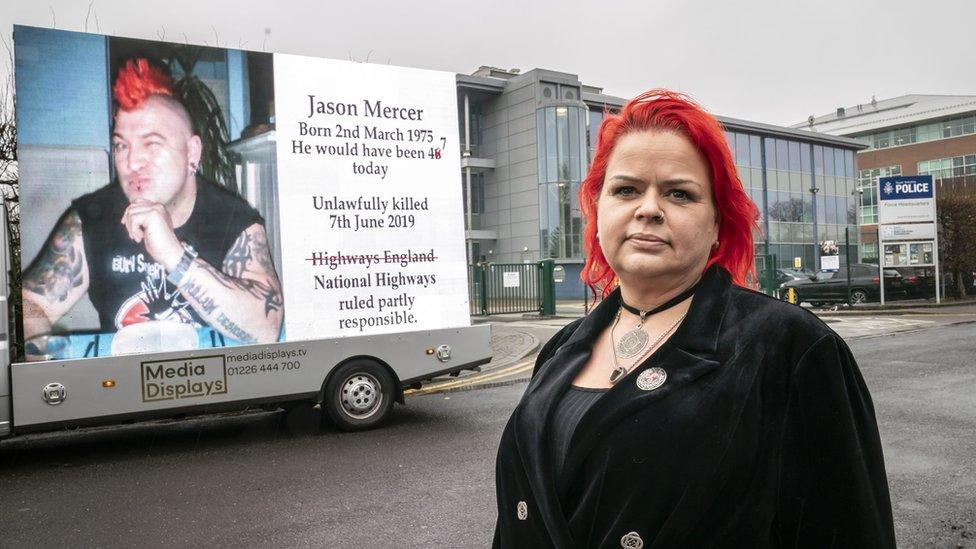Smart motorways: National Highways adds emergency areas
- Published

The orange-coloured refuges provide extra places to stop in an emergency on a smart motorway
Spaces where cars can pull over in safety are to be added to smart motorways on the M3, M4, and M27.
The all-lane running motorways - which turn the hard shoulder into a fourth driving lane - will have additional places to stop in an emergency.
The building of new smart motorways was cancelled by the government in April over cost and safety concerns.
National Highways maintains that statistics show they are safer overall than conventional motorways.
However, they have been criticised by MPs, road safety bodies and campaigners who lost loved ones.
The orange-coloured spaces will be added to sections of the M27 between Eastleigh and Fareham, the M4 in Berkshire, and the M3 between junctions 2 and 4.
The government agency's announcement is part of a £900m rollout of safety improvements on existing smart motorways by 2025.
The M1, M5, M6, M20 and M25 will also have new areas added.
According to the National Highways annual progress report, external, most smart motorways "see fewer collisions and fewer deaths and serious injuries in proportion to the traffic they carry", though there is "scope for further improvement".

What is a smart motorway?

Some smart motorways use all lanes with no hard shoulder
There are three main types:
Controlled, which have a permanent hard shoulder, but use technology such as variable speed limits to adjust traffic flows
Dynamic, where the hard shoulder can be opened up at peak times; when this happens, the speed limit is reduced to 60mph
All-lane running, where the hard shoulder has been permanently removed to provide an extra lane; emergency refuge areas are provided at regular intervals for cars that get into trouble
All three models use overhead gantries to direct drivers. Variable speed limits are introduced to control traffic flow when there is congestion, or if there is a hazard ahead. These limits are controlled by speed cameras.

Chief executive Nick Harris said: "Safety is our highest priority and we are committed to further improving all-lane running motorways.
"We have completed key upgrades to improve the performance of technology to detect stopped vehicles, and today we have set out the next sections of motorway to benefit from the programme to install more than 150 extra emergency areas to give drivers added reassurance."
He said an investment of £105m would also "improve the resilience" of its technology.
AA president Edmund King said National Highways had made "good progress" in improving its safety measures, but that the "fundamental problem" was that more vehicles stopped on smart motorways than those with hard shoulders.
"The hard shoulder needs to be reinstated or at the very least the number of emergency areas needs to be radically increased," he said.
"The prospect of breaking down or stopping in a live lane is daunting as our AA call centre operators who take the distressed calls can confirm."
He said he was in favour of the controlled motorways model, which had both smart motorway technology and a hard shoulder.

The full 11 locations announced for additional emergency areas are:
M1 junctions 16 to 19 in Northamptonshire
M1 junctions 23a to 25 in Leicestershire & Nottinghamshire
M1 junctions 28 to 30 in Derbyshire
M1 junctions 30 to 31 in Derbyshire
M3 junctions 2 to 4a in Surrey & Hampshire
M4 junctions 10 to 12 in Berkshire
M5 junctions 4a to 6 in Worcestershire
M6 junctions 21a to 26 in Cheshire
M20 junctions 3 to 5 in Kent
M25 junctions 5 to 7 in Surrey & Kent
M27 junctions 4 to 11 in Hampshire

Follow BBC South on Facebook, external, X, external, or Instagram, external. Send your story ideas to south.newsonline@bbc.co.uk, external.
- Published12 June 2023

- Published17 April 2023

- Published16 April 2023

- Published16 April 2023

- Published2 March 2022
